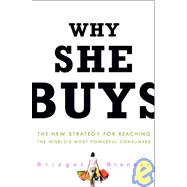
| Introduction: Women are Females First and Consumers Second | p. 1 |
| Women are the Mother Lode: What They Didn't Teach You in Business School | p. 17 |
| Getting to Know the Locals: A Tour of the Genders | p. 43 |
| The Five Global Trends Driving Female Consumers | p. 83 |
| Pink Is Not A Strategy: Creating Products with a Female Focus | p. 143 |
| Marketing to Women: The Difference Between Sex Appeal and Gender Appeal | p. 183 |
| The Last Three Feet: Fundamentals of Selling to Women | p. 227 |
| We Have Seen the Future, and it is Female: Applying the Knowledge to Your Business | p. 267 |
| The X to Y Mencyclopedia: Bridging the Gender Gap, One Word at a Time | p. 279 |
| Notes | p. 299 |
| Acknowledgments | p. 307 |
| Index | p. 311 |
| Table of Contents provided by Ingram. All Rights Reserved. |
The New copy of this book will include any supplemental materials advertised. Please check the title of the book to determine if it should include any access cards, study guides, lab manuals, CDs, etc.
The Used, Rental and eBook copies of this book are not guaranteed to include any supplemental materials. Typically, only the book itself is included. This is true even if the title states it includes any access cards, study guides, lab manuals, CDs, etc.
Excerpted from Why She Buys: The New Strategy for Reaching the World's Most Powerful Consumers by Bridget Brennan
All rights reserved by the original copyright owners. Excerpts are provided for display purposes only and may not be reproduced, reprinted or distributed without the written permission of the publisher.